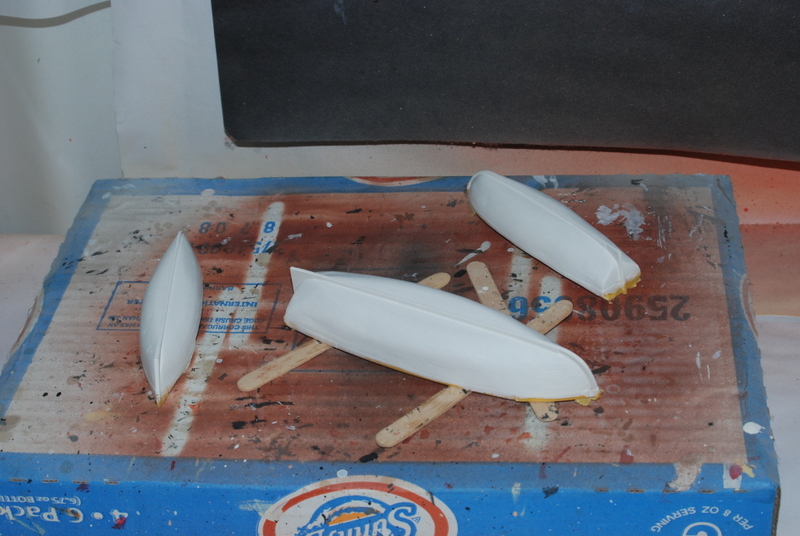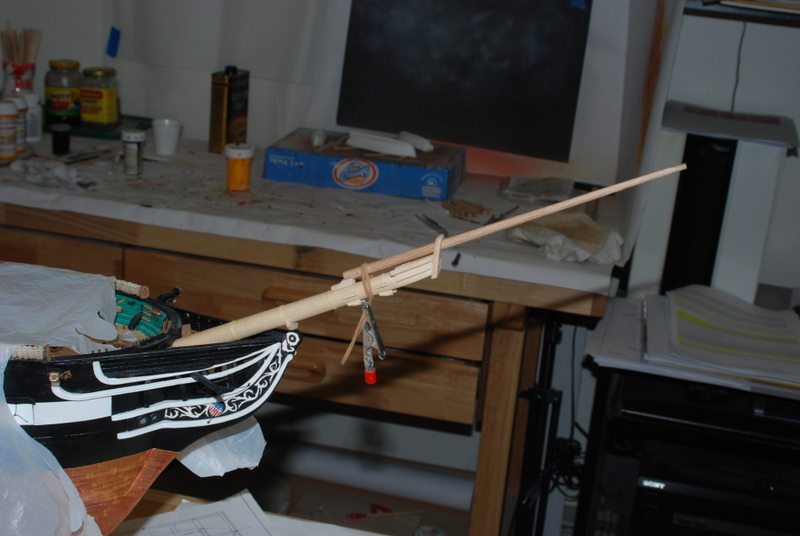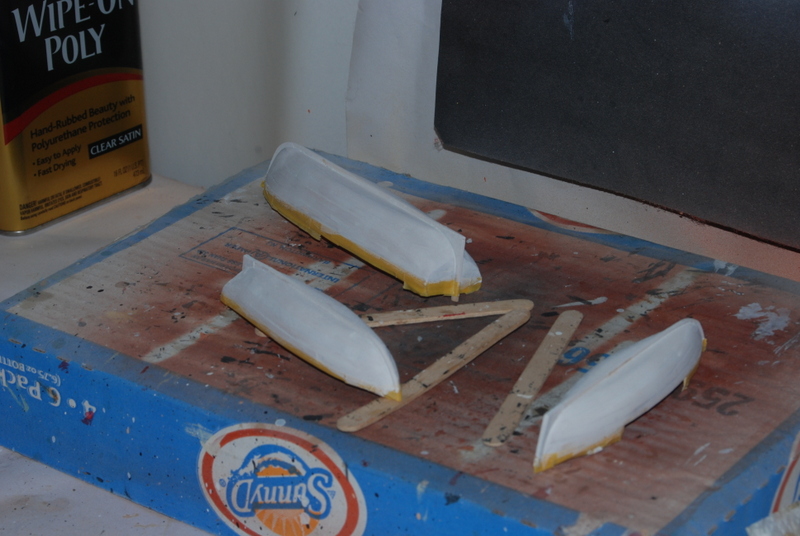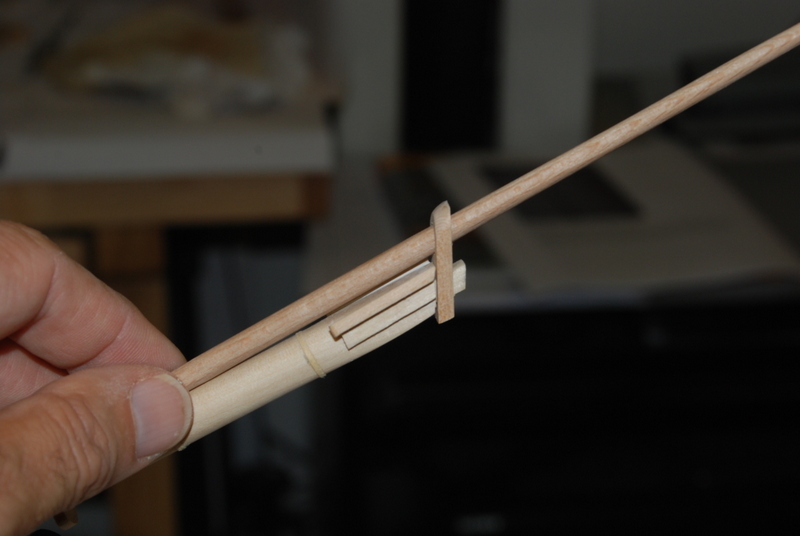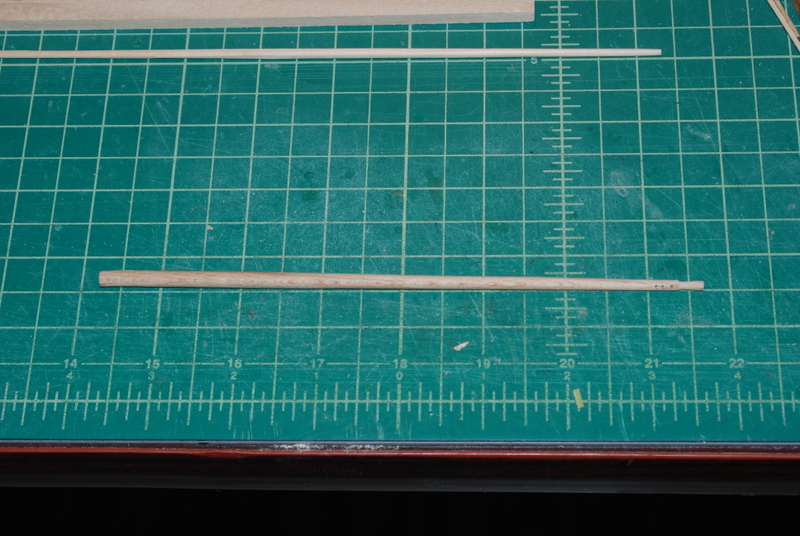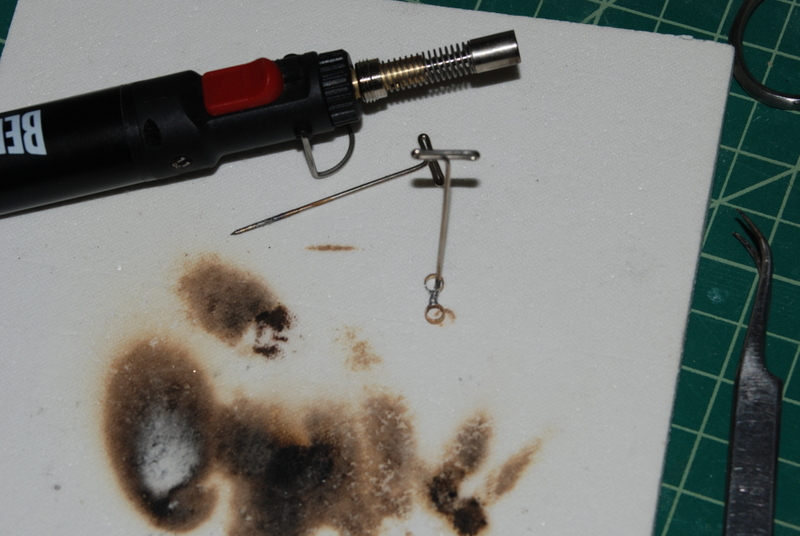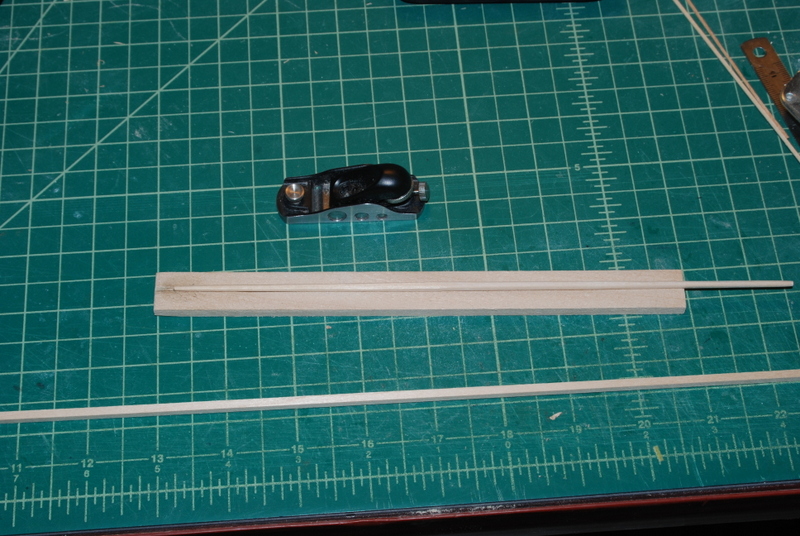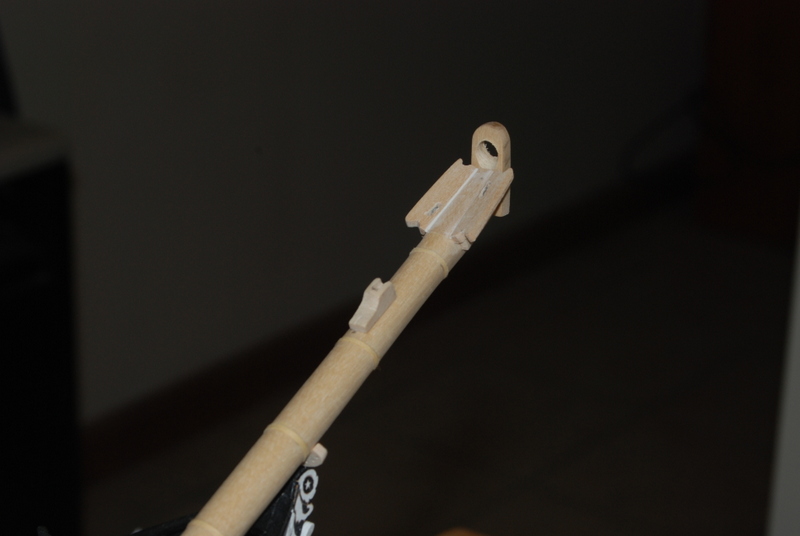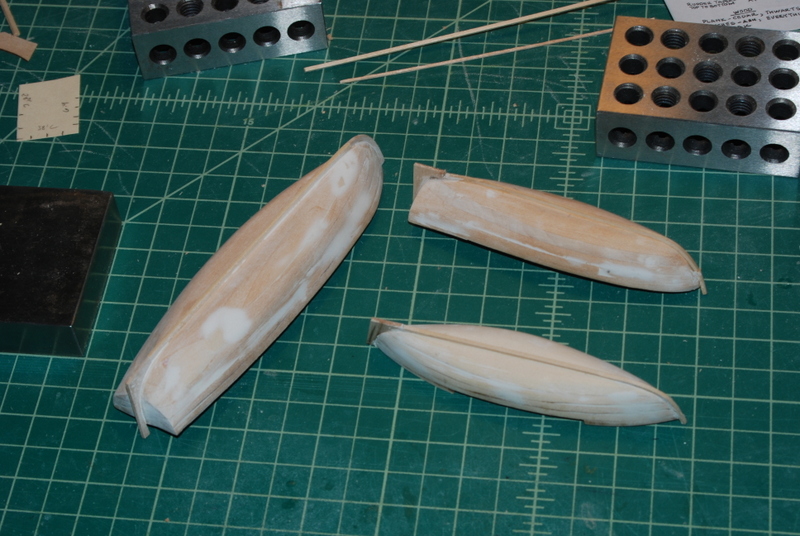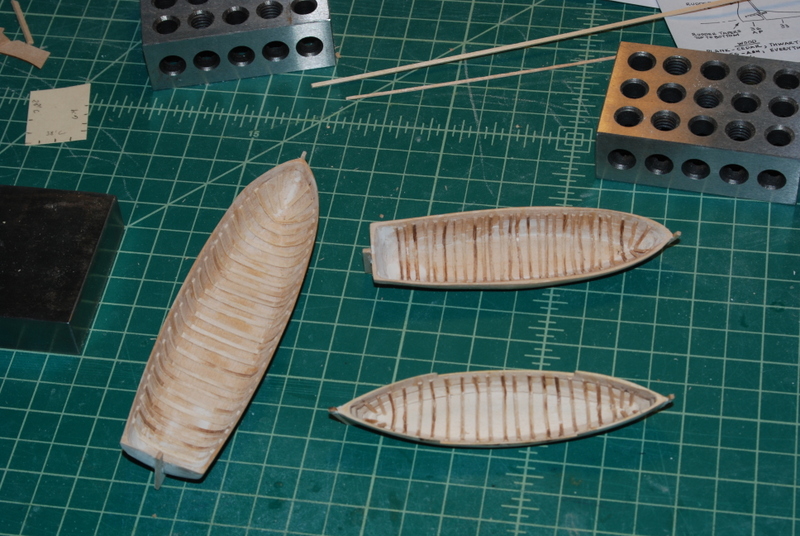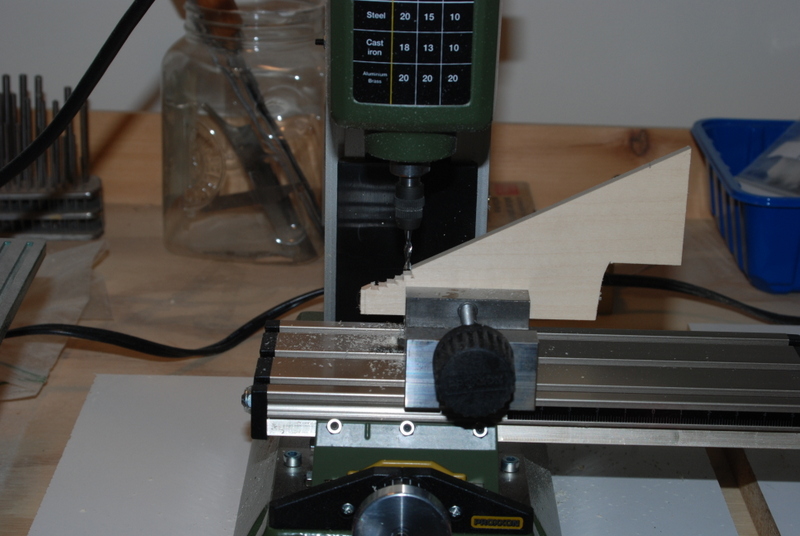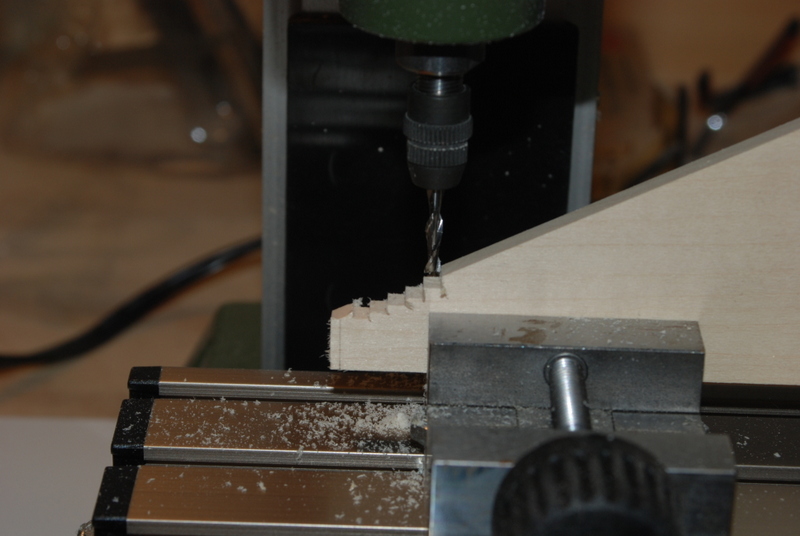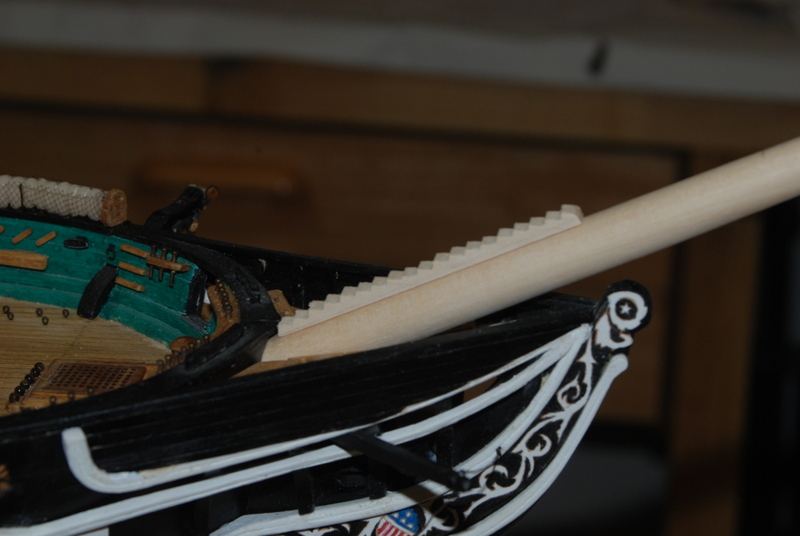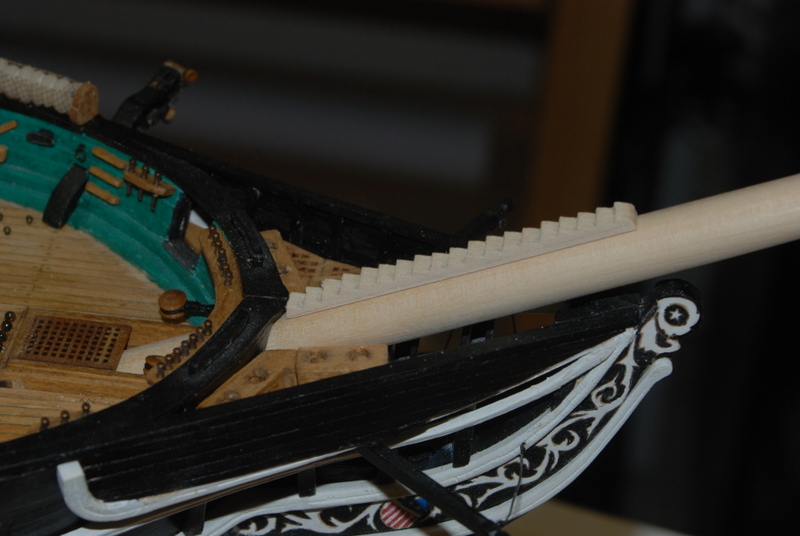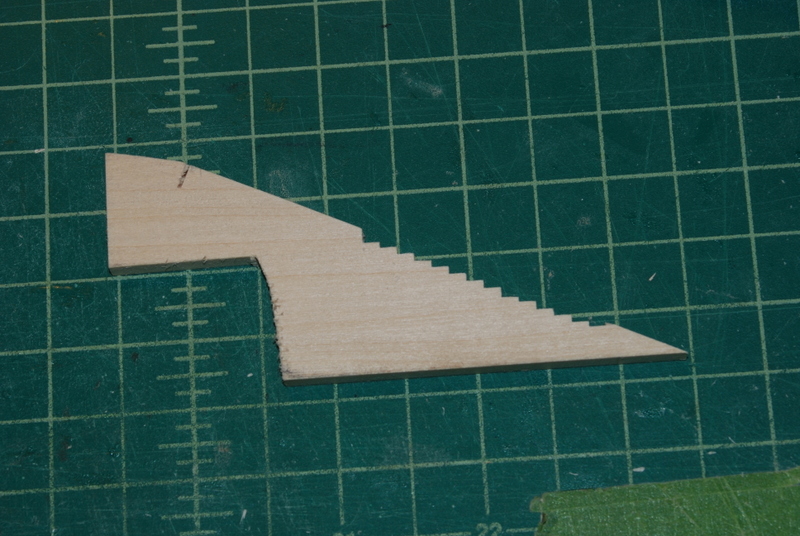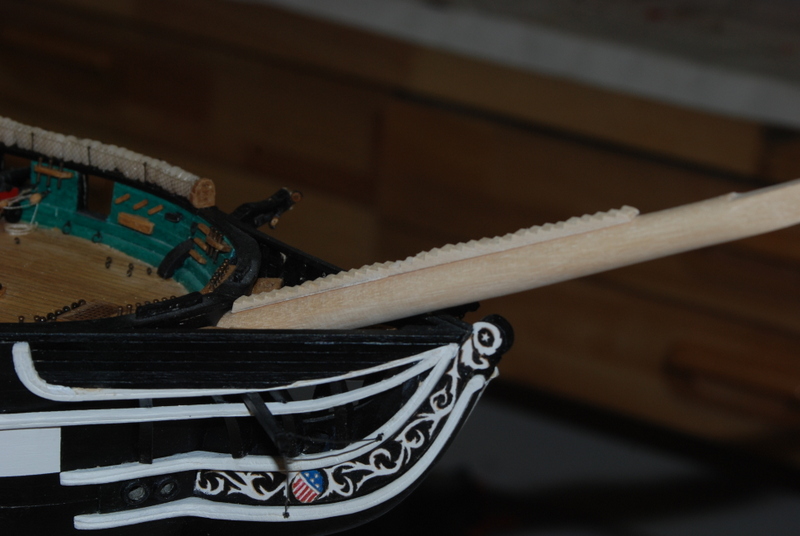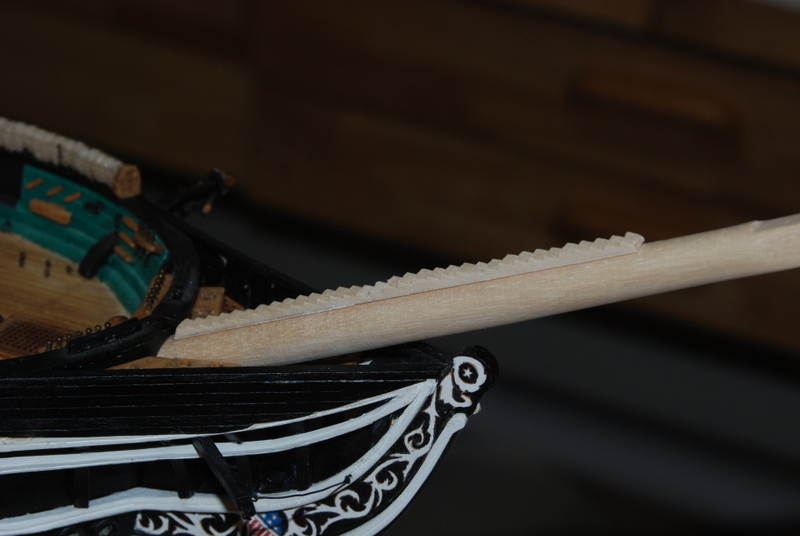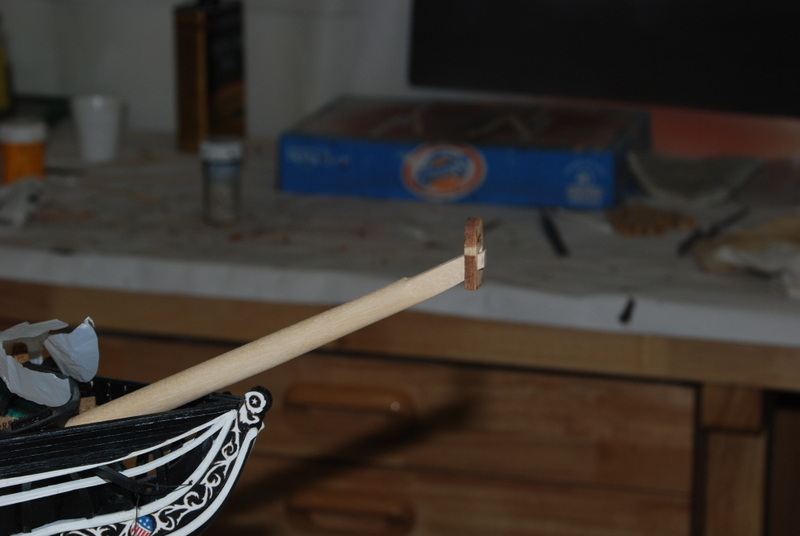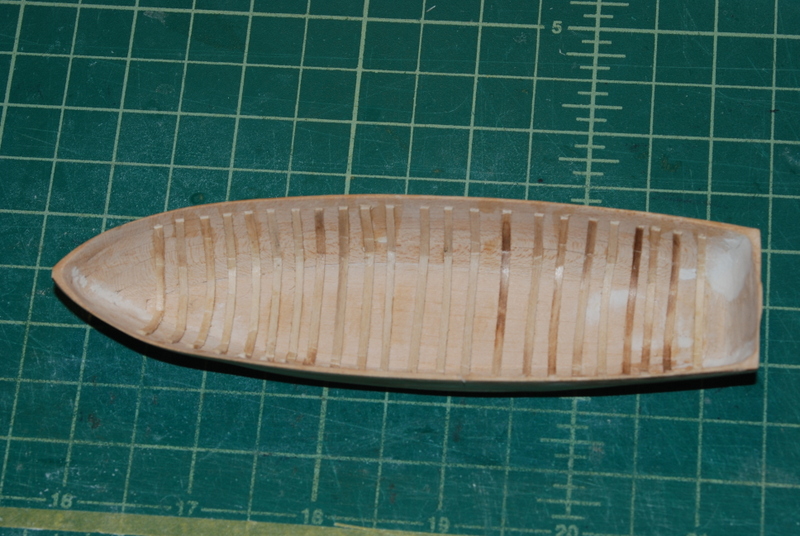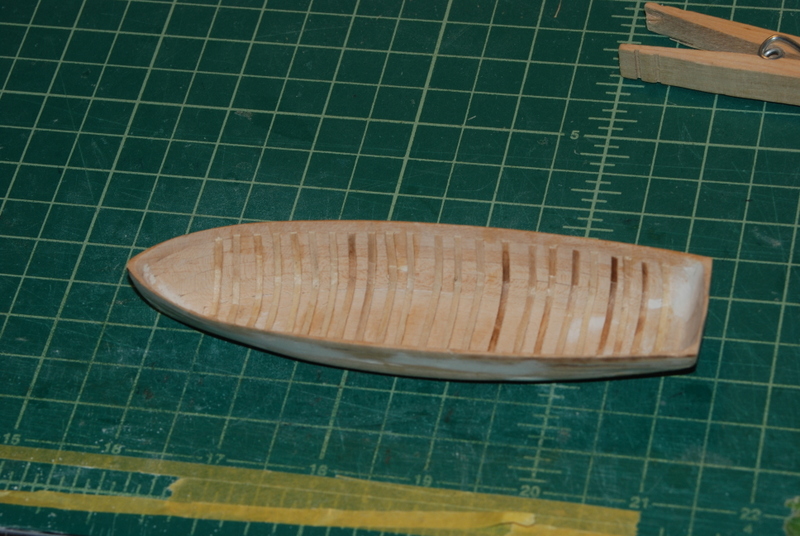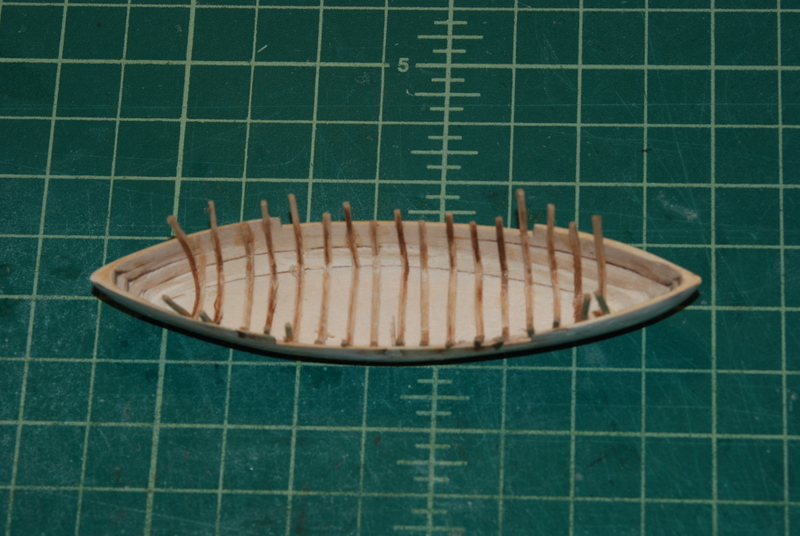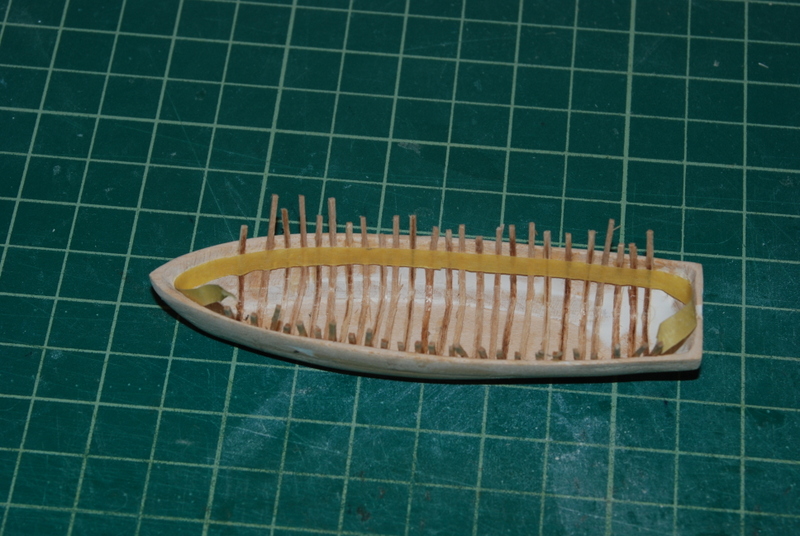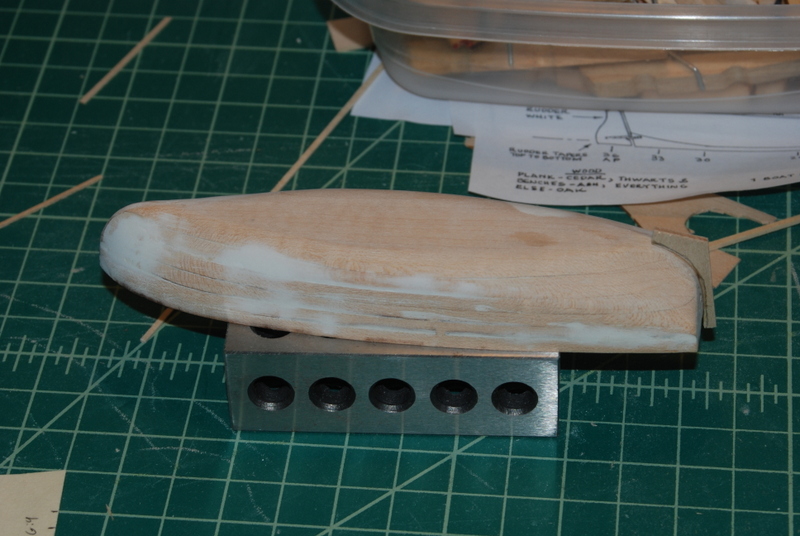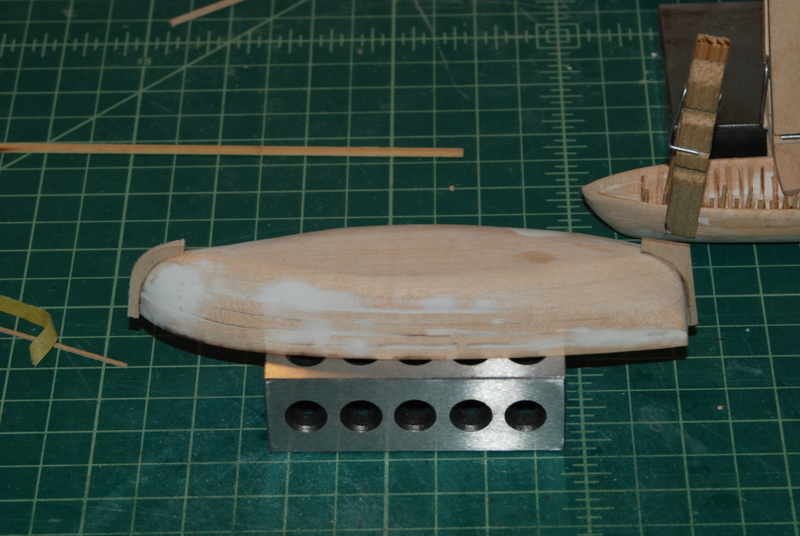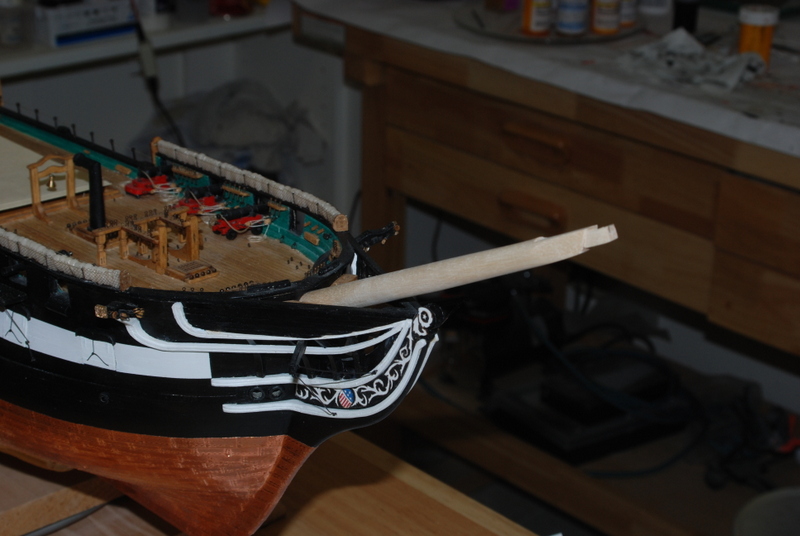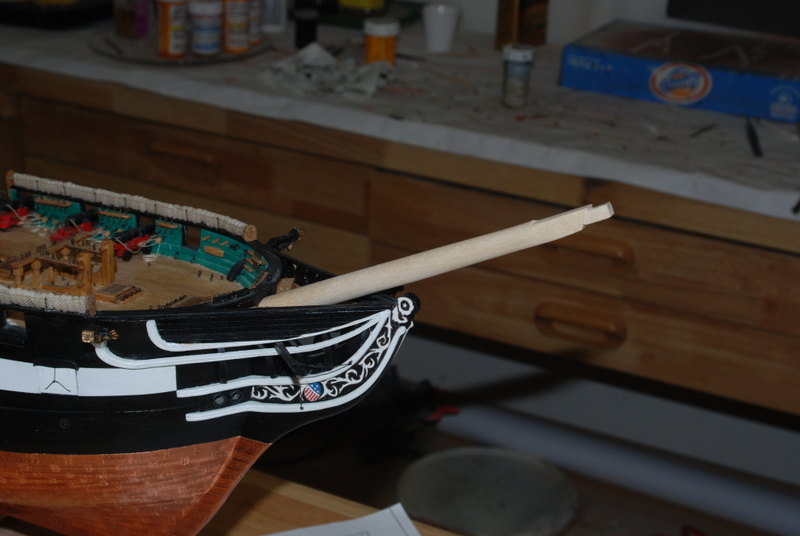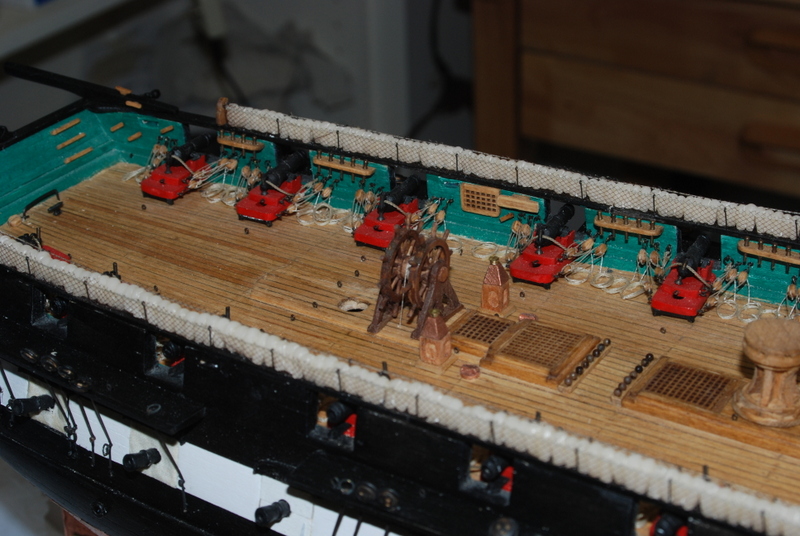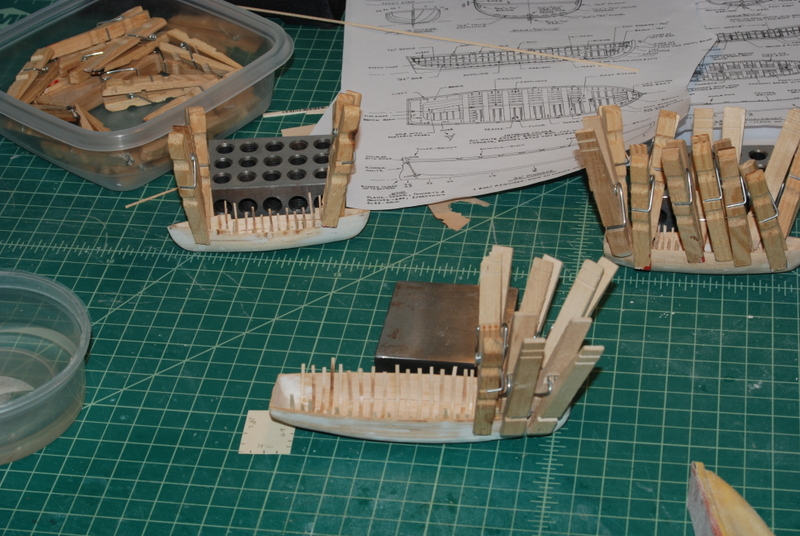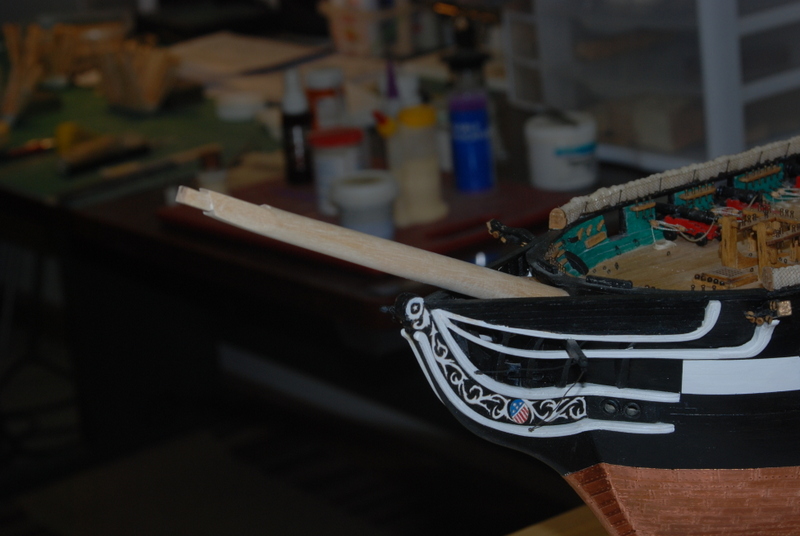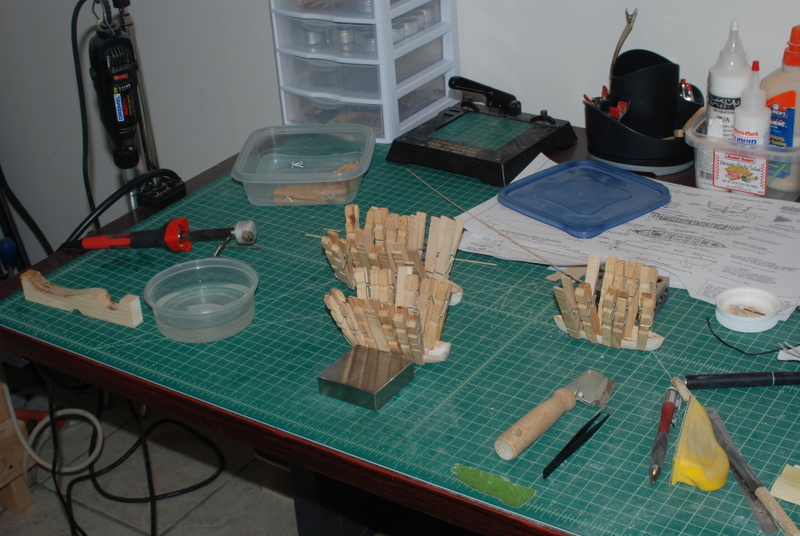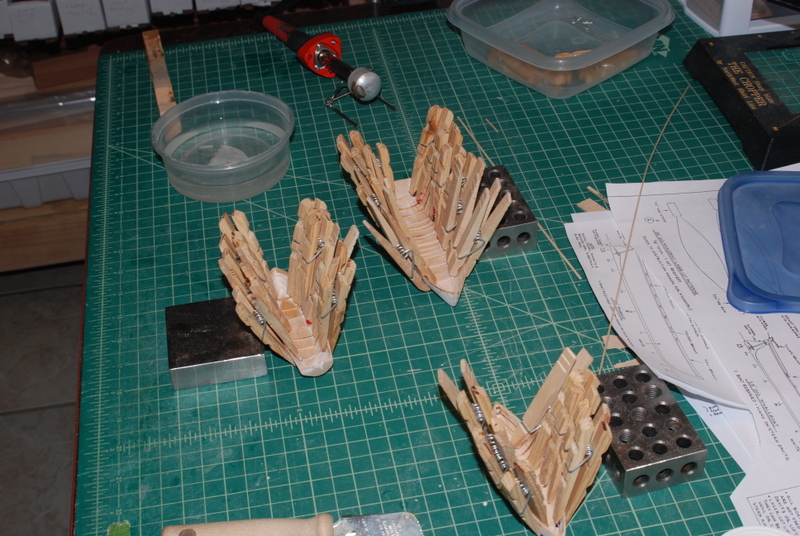-
Posts
2,414 -
Joined
-
Last visited
Content Type
Profiles
Forums
Gallery
Events
Everything posted by usedtosail
-
Really beautiful Pat. A great job you have done,
- 517 replies
-
- Endeavour
- Artesania Latina
-
(and 1 more)
Tagged with:
-
Hi Fright. I see you do have a build log, so I will check it out. I used the blocks from Model Expo for the guns. These are pretty blocky as they come, so I round them up with some files to get them to look better. For the single blocks I used 2.5mm blocks which I kept at that size. The smallest double blocks they sell are 3mm, so I filed them down to 2.5 mm before rounding them off.
- 1,350 replies
-
- constitution
- model shipways
-
(and 1 more)
Tagged with:
-
Thanks Fright. It hasn't been that long that I have been building wooden ship models but it is so enjoyable. Don't be intimidated to start a build log. You will get some great advice from this group.
- 1,350 replies
-
- constitution
- model shipways
-
(and 1 more)
Tagged with:
-
In between cleaning the gutters today I made some good progress. I gave the boats another two coats of white paint, and I think they are good to go now. I'll be started to fit out the interiors when this final coat dries. Over the last few days I have been working on the martingale. I started with two 1/16" square pieces that I planed and turned into the two legs. I took a piece of 1/16" sheet stock and at a 90 degree corner I marked out the angles and drilled two holes that the legs just fit in. I wanted a really secure joint for these, as I will probably bump them a few times while rigging. I then drew out the shape for the "head" and cut it out with the jig saw. I glued the legs in and shaped the transitions between the legs and the head with files and sandpaper, then finished the shape of the head. I drilled small holes into the legs and glued on small piece of wood for the chokes, which I am in the process of shaping. I had to glue a couple of these back on that fell off while sanding them, which is where I am now. I have also been test fitting the bow sprit and jibbooms and making the metal pieces that hold them together. I am almost ready to paint them, once the martingale is ready. As always, thanks for looking in.
- 1,350 replies
-
- constitution
- model shipways
-
(and 1 more)
Tagged with:
-
How about a large self healing cutting mat, which is what i have on my work table. Amazon has some that are 48" on a side.
-
Yes, modern art is what went through my mind when I saw the pictures. That is a great looking jig and I bet it works even better than it looks.
- 749 replies
-
- albertic
- ocean liner
-
(and 2 more)
Tagged with:
-
A proper update with pictures. First, I masked off the rails on the three ships boats, then gave them a coat of primer and the first of many coats of diluted white paint, inside and out. Between painting I continued working on the bow sprit and jibbooms. I did end up remaking the cap because once I got the jibboom to its reduced size, the hole I had filed out was too big. The nice part about making my own was that I was able to hold the raw material in the drill press vise at the proper angle and drill the holes just about at the correct size. Then I just had to file out the round hole a little, and square up the other hole. I did make these a little further apart than the original cap had them, so the jibboom and its support piece fit better. Once I was happy with the holes, I cut the piece out of the sheet stock and sanded in the appropriate bevels on the top and bottom. This proved to be a little more challenging than I thought it would be to get the top to look right. I ended up making a few of these until I got the one I wanted. I then turned to making the flying jibboom. I did this one a little different from the other spars, in that I made it out of square stock instead of starting with a round dowel. EdT has a great tutorial on how he does this in his Young America build log, so I thought I would give it a try. I found it easier, less messy and less time consuming than making it out of dowel. I used a small plane to shave down the sides to the right profile, then used it again to plane off the corners. I chucked it in the lathe and sanded it round to finish it off. Kits don't usually supply large enough square stock to do this, but for smaller spars, like this one which was max 1/8", I had it in stock. I have found places on the net where you can order larger sizes of square stock, like 1/2", though if you do want to use this method for larger spars.. I used the mill to drill holes in the jibbooms to simulate the sieves, then used an X-Acto knife and small round file to finish them off. I then had to make the metal bracket to hold the two jibbooms, which I made from slices of two different diameter brass tubes with a smaller tube to connect them. I placed the three pieces together, put a drop of flux on them, then placed a small piece of silver solder on the connecting piece, and hit them with a pencil torch just until the solder melted and ran into the joints. When it cooled I cleaned it up with a small file. It still needs a little more clean up and to be blackened. A few pieces to add to the bow sprit, then I will make the dolphin striker.
- 1,350 replies
-
- constitution
- model shipways
-
(and 1 more)
Tagged with:
-

Galley Washington by Mike40 - 1:48 - POF
usedtosail replied to Mike40's topic in - Build logs for subjects built 1751 - 1800
Looks great so far Mike. -
Very nice start, Steve. I like your reasoning for doing a cross section first, which is the same reasoning I used when I started. I will look forward to following along with your build log.
- 108 replies
-
- mamoli
- constitution
-
(and 2 more)
Tagged with:
-
Thank you Geoff, Steve, Ronald and Bill, and those who hit the like button. I agree that the boats are little models in themselves and I have tried to tackle them that way. I am also hopeful that once all the interior stuff is in them the ribs won't be so prominent. I masked off the rails last night and will prime them tonight. I use AOS a lot and I am referring to the Anatomy of Ships series of books, particularly the Constitution book in this case. I have used others as references for other builds too. I shaped the jibboom this morning and now it looks like the bow sprit cap will work just fine. I'll have pictures of that later.
- 1,350 replies
-
- constitution
- model shipways
-
(and 1 more)
Tagged with:
-
Thank you Greg and Popeye, and for the likes. I didn't make too much progress on Sunday but did have some time in the evenings this week, so some progress to report. First the boats. I have been bending and installing the keel sections for the two small boats. I still have to sand these out but the raw pieces are in place. Here is an ugly shot of the ribs, which have all been trimmed down. I am OK with the large cutter and the gig, but not with the small cutter. I am going to go ahead with painting and fitting out the interior of all three boats, but I may decide to leave off the small cutter if i don't like how it turns out. On the bow sprit, I have made and installed the bees, fair lead, and jibboom support. I also filed out the hole for the jibboom on the cap. This picture clearly shows a problem, however, in that the two holes in the cap are too close together, so I will not be able to get the jibboom to the same angle as the bow sprit. It looks like I am going the have to make a new cap from scratch anyway, but that is OK since I have a good pattern to use now. I have started building the jibboom too but so far I have the octagon section at the end done and the tab milled to fit into the slot on the bow sprit support piece. I still need to turn the rest of the dowel down on the lathe to get to the final diameters. Other jobs planned for this weekend, so next progress report sometime mid to end next week. Maybe I'll have some paint on those boats by then, so I can start fitting out the interiors.
- 1,350 replies
-
- constitution
- model shipways
-
(and 1 more)
Tagged with:
-
That is beautiful work as usual Bob. Congratulations.
- 348 replies
-
- pequot
- cable ship
-
(and 1 more)
Tagged with:
-
Frank, I like your latest technique for the chain plates. They look fabulous.
- 649 replies
-
- dunbrody
- famine ship
-
(and 2 more)
Tagged with:
-
Just getting home from work, which wasn't fun. Once home though, I got to spend a good couple of hours in the work shop.
-
Last night I focused on finishing the stairs for the bow sprit, since I had the mill all set up for it. It turns out I was not able to make them in one piece, because as I went higher on the wood blank, there was too much vibration of the wood. I was able to make them in two pieces, but it did take three attempts to make the second piece. The nice thing with this method was that if I messed up or didn't like how the steps were looking, I could just trim off the steps on the table saw and start again on the same wood blank. Trimming the cut steps off on the blank was easy to do in the table saw, once I put the extension on the miter gauge so I could cut them off at the correct angle. I was afraid they would be very fragile once they were cut off, but they were not. I was able to clean them up with a small flat file and some sand paper, then trim them to length so they fit together nicely. I then wrapped a piece of dowel with some sandpaper and put it in the vice, then slid the stairs along the dowel to sand in the curvature on the bottom to fit on the bow sprit dowel. I am going to put these aside for now because I need to fit slots under one of the pieces to fit over the gammoning line, which I won't be putting on for a while. I don't want to cut the slots now and find out later they are the wrong size or out of place. Here is the bow sprit cap in place, after filing the slot for the tenon to the correct angle. I have to hand it to Model Expo for how they provide this cap. In previous kits I have made the tops come with square holes that are cut straight through them, which is how a laser cutter is gong to cut them. When the caps need to be put on at an angle, if you file the angle into the holes they are now too big, which pretty much forces you to make new caps from scratch. This cap came with a rectangular, narrow hole which allowed me to file the angle into it and end up with exactly the right size hole. I am home alone this weekend so I'll have more to show tomorrow.
- 1,350 replies
-
- constitution
- model shipways
-
(and 1 more)
Tagged with:
-
For my friend Nenad, here are some more,closer up, construction pictures of the ships boats. Here is how they look after the ribs are all added: I then use tape to mark the tops of the ribs, and trim them off with a scalpel: Here is the larger cutter with the ribs trimmed: I am now in the process of adding the keel pieces. The bow and stern pieces I cut out of sheet material and cut the curved in on the scroll saw: Since these boat hulls will be painted I have used wood filler. The outsides have not yet been fully sanded. Once I prime them, I will probably need to do another round of filler and primer. I'll continue to document the process of making these as I go along.
- 1,350 replies
-
- constitution
- model shipways
-
(and 1 more)
Tagged with:
-
Congratulations Popeye. That rain and lightning was something else last night down here too.
-

HMS Beagle by johnb72 - after 1831 refit
usedtosail replied to johnb72's topic in - Build logs for subjects built 1801 - 1850
Hi John. I look forward to following you along on this project. A few years ago I started with the Mamoli Beagle kit and modified as much as I could to match Marquardt's book. It came out OK, but a scratch build will be even better. -
Thanks all. Bill, I was lucky that my wife let me take over half the finished part of the basement after the kids moved out. It seemed like lots of space at the time, but I have slowly filled it up. Nenad - the boats are pretty ugly at the moment but I will take some close ups as I progress on them. I have the advantage of working at a much larger scale then you are, but I am sure yours will come out great based on the work you have done so far.
- 1,350 replies
-
- constitution
- model shipways
-
(and 1 more)
Tagged with:
-
I am still adding ribs to the three boats, although all of the ribs are now in the large cutter. The others are taking more time because they are closer together so the width of the clamps limits the number I can put in at a time. In between adding ribs, I attached the ships wheel to the deck. I have also started constructing the bow sprit. It has a unique shape where the top is straight but the sides and bottom are tapered. This makes it a bit harder to shape on a lathe. My approach was to sand a flat into the bottom to get the taper, then hand sand the edges to start rounding them out, then put it in the lathe and sand it to finish rounding it out. I think this worked pretty well. I used the mill to shape the square section at the front, then the tenon for the cap. This has always been challenging to me to get these square sections to come out, well, square, but with the mill this was a lot easier. I am working out how to make the stairs on the mill too and will show how I end up doing it in a future post.
- 1,350 replies
-
- constitution
- model shipways
-
(and 1 more)
Tagged with:
-
Some progress since the last post. I managed to get all three boats roughly shaped inside and out. I did more shaping on the inside, and now I am in the process of adding the ribs to all three. They are very thin, so I am hoping that the ribs will give some support before doing the final fairing of the outsides. I will then paint them white, except for the rails, and then add the natural wood details of the interior. I soak the ribs and bend them with the electric plank bender in the picture, then place them inside the hull and clamp then while they dry. The next day or so, I then glue them in place and again clamp them in with clothes pins. Here are a bunch drying after bending, with some already glued in.
- 1,350 replies
-
- constitution
- model shipways
-
(and 1 more)
Tagged with:
About us
Modelshipworld - Advancing Ship Modeling through Research
SSL Secured
Your security is important for us so this Website is SSL-Secured
NRG Mailing Address
Nautical Research Guild
237 South Lincoln Street
Westmont IL, 60559-1917
Model Ship World ® and the MSW logo are Registered Trademarks, and belong to the Nautical Research Guild (United States Patent and Trademark Office: No. 6,929,264 & No. 6,929,274, registered Dec. 20, 2022)
Helpful Links
About the NRG
If you enjoy building ship models that are historically accurate as well as beautiful, then The Nautical Research Guild (NRG) is just right for you.
The Guild is a non-profit educational organization whose mission is to “Advance Ship Modeling Through Research”. We provide support to our members in their efforts to raise the quality of their model ships.
The Nautical Research Guild has published our world-renowned quarterly magazine, The Nautical Research Journal, since 1955. The pages of the Journal are full of articles by accomplished ship modelers who show you how they create those exquisite details on their models, and by maritime historians who show you the correct details to build. The Journal is available in both print and digital editions. Go to the NRG web site (www.thenrg.org) to download a complimentary digital copy of the Journal. The NRG also publishes plan sets, books and compilations of back issues of the Journal and the former Ships in Scale and Model Ship Builder magazines.



